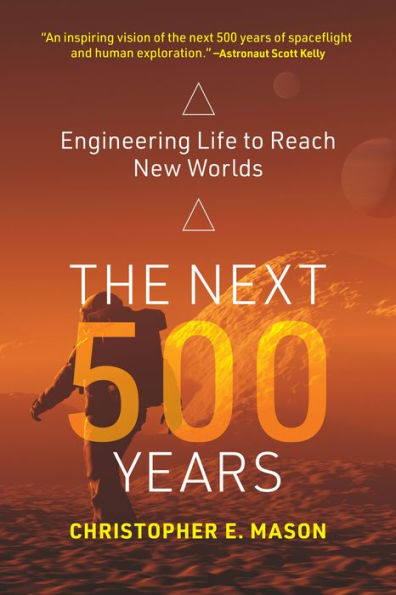Introducing a 10-phase, 500-year vision for the future of space exploration, genetic engineering, and the human species—on Earth and on other planets.
As the only species aware that life on Earth has an expiration date, we have a moral duty to land on, to live on, and to extend life to other planets.
Inevitably, life on Earth will come to an end, whether by climate disaster, or by cataclysmic war—or when the sun runs out of fuel in a few billion years. To avoid extinction, will we have to find a new home planet, perhaps even a new solar system, to inhabit?
In this provocative and fascinating book, Christopher Mason argues that we have a moral duty to do just that. Because we are the only species aware that life on Earth has an expiration date, we have a responsibility to act as the shepherd of lifeforms—not only for our species but for all species on which we depend and for those still to come (by accidental or designed evolution). Mason argues that the same capacity for ingenuity that has enabled us to build rockets and land on other planets can be applied to redesigning biology so that we can sustainably inhabit those planets. And he lays out a 500-year plan for undertaking the massively ambitious project of reengineering human genetics for life in other worlds.
"1136706153"
As the only species aware that life on Earth has an expiration date, we have a moral duty to land on, to live on, and to extend life to other planets.
Inevitably, life on Earth will come to an end, whether by climate disaster, or by cataclysmic war—or when the sun runs out of fuel in a few billion years. To avoid extinction, will we have to find a new home planet, perhaps even a new solar system, to inhabit?
In this provocative and fascinating book, Christopher Mason argues that we have a moral duty to do just that. Because we are the only species aware that life on Earth has an expiration date, we have a responsibility to act as the shepherd of lifeforms—not only for our species but for all species on which we depend and for those still to come (by accidental or designed evolution). Mason argues that the same capacity for ingenuity that has enabled us to build rockets and land on other planets can be applied to redesigning biology so that we can sustainably inhabit those planets. And he lays out a 500-year plan for undertaking the massively ambitious project of reengineering human genetics for life in other worlds.
The Next 500 Years: Engineering Life to Reach New Worlds
Introducing a 10-phase, 500-year vision for the future of space exploration, genetic engineering, and the human species—on Earth and on other planets.
As the only species aware that life on Earth has an expiration date, we have a moral duty to land on, to live on, and to extend life to other planets.
Inevitably, life on Earth will come to an end, whether by climate disaster, or by cataclysmic war—or when the sun runs out of fuel in a few billion years. To avoid extinction, will we have to find a new home planet, perhaps even a new solar system, to inhabit?
In this provocative and fascinating book, Christopher Mason argues that we have a moral duty to do just that. Because we are the only species aware that life on Earth has an expiration date, we have a responsibility to act as the shepherd of lifeforms—not only for our species but for all species on which we depend and for those still to come (by accidental or designed evolution). Mason argues that the same capacity for ingenuity that has enabled us to build rockets and land on other planets can be applied to redesigning biology so that we can sustainably inhabit those planets. And he lays out a 500-year plan for undertaking the massively ambitious project of reengineering human genetics for life in other worlds.
As the only species aware that life on Earth has an expiration date, we have a moral duty to land on, to live on, and to extend life to other planets.
Inevitably, life on Earth will come to an end, whether by climate disaster, or by cataclysmic war—or when the sun runs out of fuel in a few billion years. To avoid extinction, will we have to find a new home planet, perhaps even a new solar system, to inhabit?
In this provocative and fascinating book, Christopher Mason argues that we have a moral duty to do just that. Because we are the only species aware that life on Earth has an expiration date, we have a responsibility to act as the shepherd of lifeforms—not only for our species but for all species on which we depend and for those still to come (by accidental or designed evolution). Mason argues that the same capacity for ingenuity that has enabled us to build rockets and land on other planets can be applied to redesigning biology so that we can sustainably inhabit those planets. And he lays out a 500-year plan for undertaking the massively ambitious project of reengineering human genetics for life in other worlds.
16.99
In Stock
5
1

The Next 500 Years: Engineering Life to Reach New Worlds
296
The Next 500 Years: Engineering Life to Reach New Worlds
296Related collections and offers
16.99
In Stock

From the B&N Reads Blog
